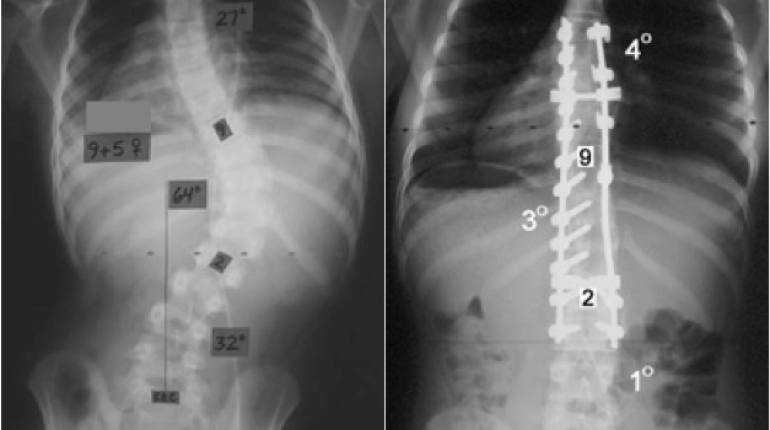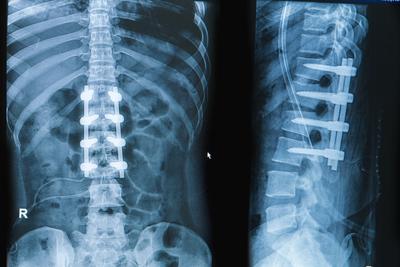Spinal fusion is a surgical technique in which one or more of the vertebrae of the spine are united together (“fused”) so that motion no longer occurs between them.
Spinal fusion involves techniques designed to mimic the normal healing process of broken bones. During spinal fusion, your surgeon places a bone or a bone-like structure within the space between two spinal vertebrae. Metal plates, screws and rods may be used to hold the vertebrae together, so they can heal into one solid unit.
Because spinal fusion surgery immobilizes parts of your spine, it changes the way your spine can move. This places additional stress and strain on the vertebrae above and below the fused portion, and may increase the rate at which those areas of your spine degenerate.
To put it simply, the concept of fusion is similar to that of welding in industry. Spinal fusion surgery, however, does not weld the vertebrae immediately during surgery. Rather, bone grafts are placed around the spine during surgery. The body then heals the grafts over several months – similar to healing a fracture – which joins, or “welds,” the vertebrae together.
There is little chance of a recurrent disc herniation at the segment because most of the disc is removed with this type of surgery.
Open discectomy has been performed and improved over the course of the past 60 years. Over time, the procedure has been refined, and improved diagnostic tools—such as magnetic resonance imaging (MRI) and computerized tomography (CT) scans—have allowed physicians to gain a better understanding of which patients will have the best results from the surgery.
Image Credits: spinal-deformity-surgeon, revealnews, back-surgery

